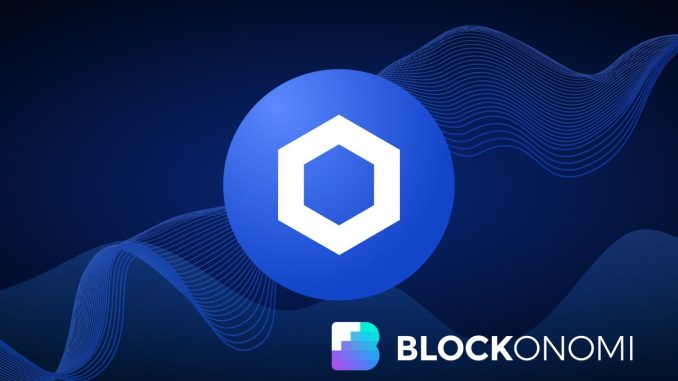
TLDR:
Lido integrates Chainlink’s CCIP for direct ETH staking across Arbitrum, Base, and Optimism
Users can now stake ETH from L2 networks and receive wstETH in a single transaction
Integration includes Chainlink Data Feeds for exchange rates and Automation for liquidity management
New system eliminates need for manual bridging or third-party exchanges
Direct Staking feature can expand to other networks in future
Lido, a leading liquid staking provider, has launched a new cross-chain staking feature powered by Chainlink’s Cross-Chain Interoperability Protocol (CCIP). The integration enables users to stake ETH directly from layer-2 networks Arbitrum, Base, and Optimism, receiving wrapped staked ETH (wstETH) in return.
The new Direct Staking feature transforms the previously complex process of staking ETH from layer-2 networks into a single transaction. Before this integration, users had to either trade ETH for wstETH through third-party platforms or manually bridge their ETH to the Ethereum mainnet, which could take up to seven days.
Chainlink’s CCIP technology makes this streamlined process possible through its Programmable Token Transfer functionality. This system allows both tokens and instructions to move across different blockchain networks in one transaction, creating a more user-friendly experience.
The Direct Staking system offers users multiple methods for staking their ETH, depending on their preferences for cost and speed. In the first approach, users stake on the layer-2 network, and their ETH is sent to Ethereum via CCIP along with specific instructions. A receiving smart contract then stakes the ETH in Lido’s contracts on Ethereum mainnet, and the resulting wstETH is bridged back to the user’s layer-2 wallet address.
A second method allows users to stake ETH on the layer-2 network and receive wstETH immediately from a liquidity pool. This process uses an exchange rate feed to determine the correct amount of wstETH to distribute. The deposited ETH is later sent to Ethereum through CCIP with staking instructions, and the resulting wstETH replenishes the pool.
Lido’s integration includes additional Chainlink services beyond CCIP. The system uses Chainlink Data Feeds to track wstETH’s exchange rate on Ethereum, ensuring accurate redemption rates. Chainlink Automation helps manage liquidity by batching cross-chain ETH transfers at scheduled intervals.
Jakov Buratović, Lido’s Master of DeFi, explained that this new approach improves liquidity and supports cross-chain interoperability across layer-2 networks. He emphasized that the integration aligns with Lido’s goal of making liquid staking more accessible while maintaining decentralization.
The implementation works alongside existing methods without requiring changes to Lido’s core protocol or wstETH token deployments. This design choice allows for potential expansion to other layer-2 and alternative layer-1 networks in the future.
Security played a key role in Lido’s selection of Chainlink CCIP. The protocol features defense-in-depth security and operates through Chainlink’s decentralized oracle networks, which have handled over $16 trillion in on-chain transaction value.
Johann Eid, Chief Business Officer at Chainlink Labs, noted that the integration enables users to access liquid staking tokens in environments with low fees and fast execution. He pointed out that liquid staking tokens have become essential to the DeFi economy, and making them more accessible across multiple chains will support growth in the on-chain economy.
Several DeFi platforms, including XSwap, OpenOcean, and Interport, have already adopted the Direct Staking feature. This early adoption indicates growing support for cross-chain staking solutions in the DeFi ecosystem.
Lido continues to operate its core protocol on Ethereum mainnet, where users can tokenize their staked ETH positions into liquid wstETH tokens for use across DeFi applications. The new cross-chain capability expands this functionality to layer-2 networks, where users can benefit from reduced transaction costs.
The integration represents a technical advancement in making staking more accessible across different blockchain networks. It removes previous barriers that required multiple steps and long waiting periods for users wanting to stake ETH from layer-2 networks.
Chainlink’s comprehensive platform provides Lido with integrated solutions for data, compute, and cross-chain connectivity. This unified approach helps ensure reliable operation of the new staking system across multiple networks.
The Direct Staking feature maintains compatibility with existing wstETH deployments while adding new functionality. This design allows users to choose their preferred method of obtaining wstETH based on their specific needs and preferences.





Be the first to comment